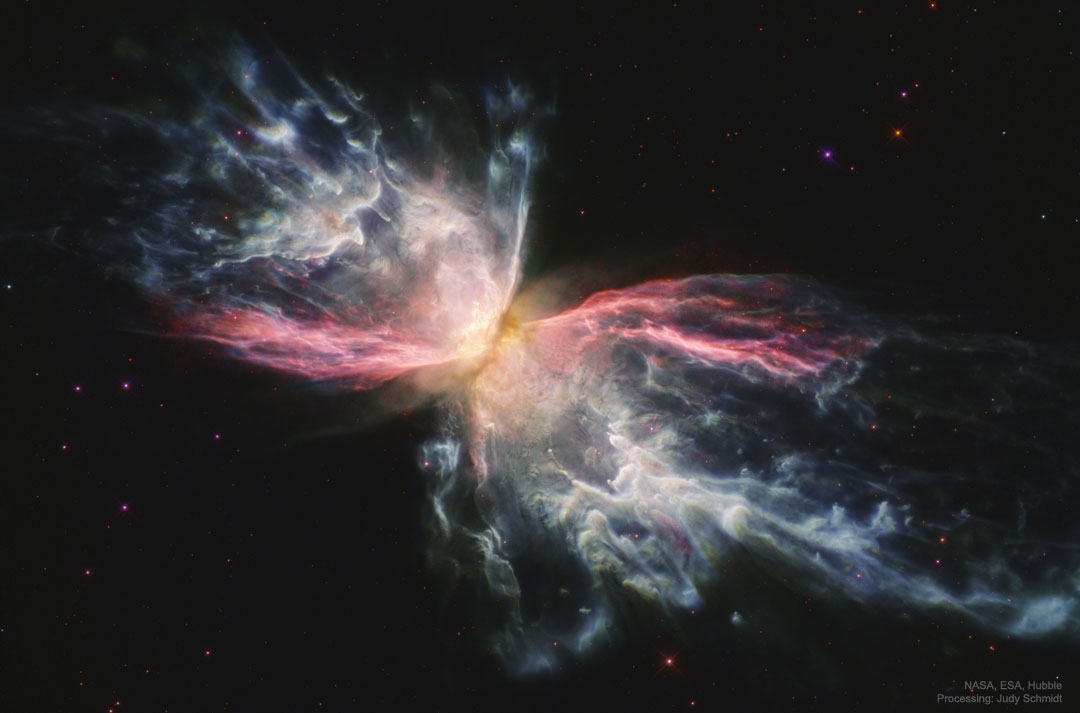7月21日
Iron in the Butterfly Nebula
Image Credit: NASA, ESA, Hubble; Processing & License: Judy Schmidt
Explanation: Can stars, like caterpillars, transform themselves into butterflies? No, but in the case of the Butterfly Nebula — it sure looks like it. Though its wingspan covers over 3 light-years and its estimated surface temperature exceeds 200,000 degrees, C, the dying central star of NGC 6302, the featured planetary nebula, has become exceptionally hot, shining brightly in visible and ultraviolet light but hidden from direct view by a dense torus of dust. This sharp close-up was recorded by the Hubble Space Telescope and is reprocessed here to show off the remarkable details of the complex planetary nebula, highlighting in particular light emitted by iron, shown in red. NGC 6302 lies about 4,000 light-years away in the arachnologically correct constellation of the Scorpion (Scorpius). Planetary nebulas evolve from outer atmospheres of stars like our Sun, but usually fade in about 20,000 years.
Great Debates in Astronomy: 2020: How will humanity first discover extraterrestrial life?
Tomorrow’s picture: open space
蝴蝶星云的铁
影像提供: NASA, ESA, Hubble; 影像处理与授权: Judy Schmidt
说明: 恒星会像毛毛虫一样蜕变成蝴蝶吗?答案是不会,不过以蝴蝶星云的案例来说,它倒真的酷似蝴蝶。这张主题影像所呈现的行星状星云,宽度超过3光年。它内部被浓密尘埃环遮住而不得见的滨死中心星,表面温度是极端炽热的摄氏200,000度,因此在可见光和紫外光波段都非常明亮。这幅极为清晰的特写影像,是由哈伯太空望远镜所拍摄。这幅后来再重新处理过的影像,目的是要呈现这团复杂行星状星云无比细致的结构,并用红色来渲染和突显铁发出的辐射。离我们约有4,000光年远的NGC 6302,很贴切的位在以节肢动物为名的天蝎座之内。行星状星云的前生是像太阳这类恒星的外层大气,不过它们通常在形成后约20,000年就会消散匿迹。
天文学大辩论:2020年:人类将如何首先发现外星生命?
明日的图片: open space




我计算了一下,我打5分之前是3.8分,打分之后是4分,那么加上我一共有六个人打分,总分是24分!!